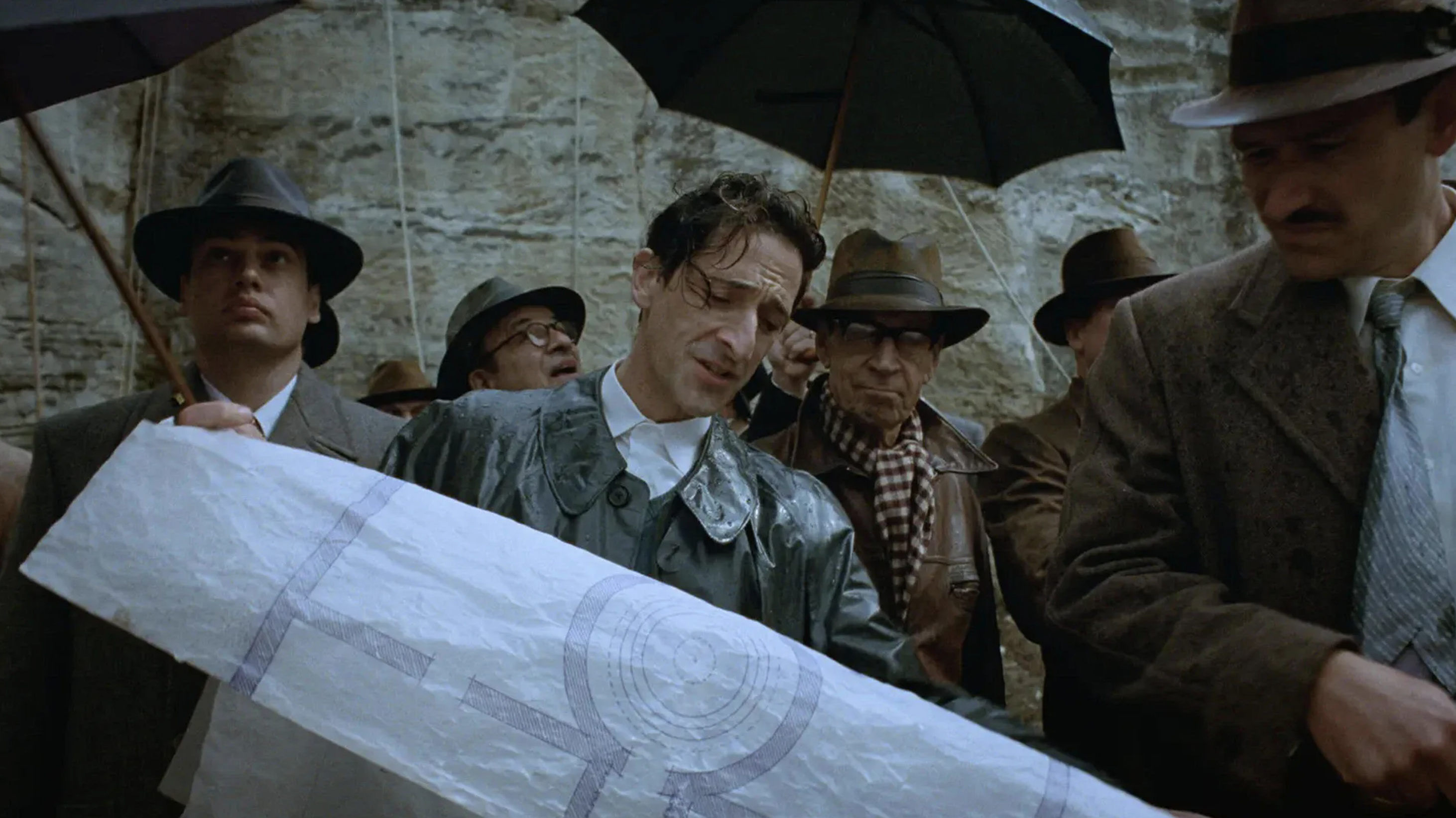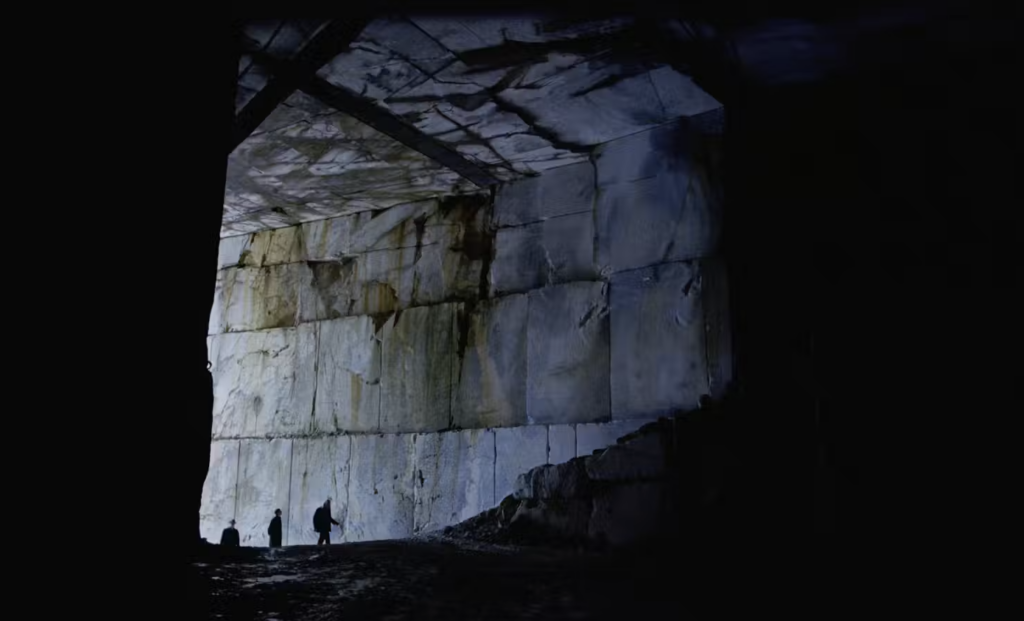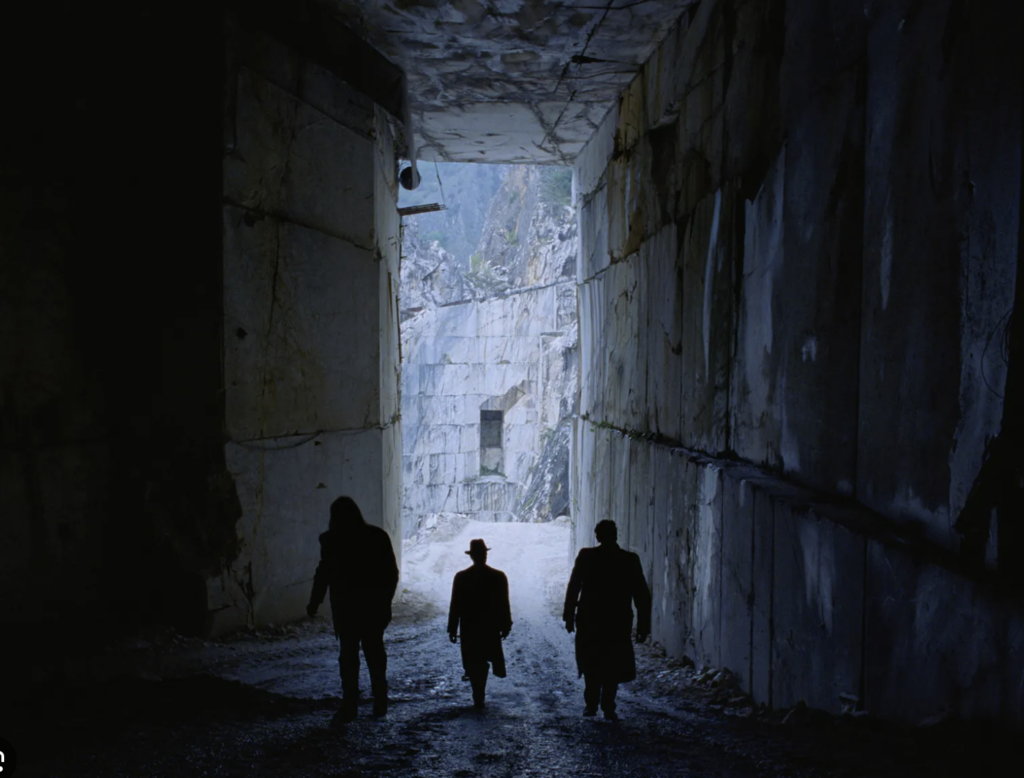
The Brutalist and Carrara Marble
April 16, 2025
Our beloved quarries in Carrara, Italy, where Richard Erdman has worked for over 40 years, were featured in the recent oscar-winning film, The Brutalist
Directed by Brady Corbet, starring Adrian Brody, with cinematography by Lol Crawley, The Brutalist has won a plethora of awards for its music, acting, and cinematography. Highlighting the beauty of Carrara’s ancient quarries amongst the background of the Apuan Alps, the film follows the life of László Toth, a Hungarian Jewish Architect as he flees anti-semitic persecution and finds his way to the USA in 1947. The film spans 30 years as we follow Toth’s transformation from an immigrant struggling with poverty to a world renowned architect. As the story unfolds, Toth is hired by a powerful man for a monumental project and a growing tension between power and creativity becomes all consuming for the dedicated Architect.

Film still from The Brutalist as the characters descend into the quarries of Carrara
Birth of Brutalism
Brutalist architecture, much like the career of the fictional Toth, was born of the rubble of WWII, emerging from the post-war reconstruction in 1950s England and France. Descending from Modernism, Brutalism showcases bare building materials and structural elements, making it the perfect style to celebrate the materiality of marble. The monumental project at the heart of the movie is constructed of raw concrete, the most common Brutalist building material. In fact, the term Brutalism comes from the French term “beton brut” which means raw concrete. Yet, the centerpiece of the project, the alter in the Cathedral, is constructed with a slab of pure white Carrara marble. Toth knows, as we do here at the studio, that only Carrara marble will shine angelically when hit with sunlight, that the crystalline structure of the marble is perfectly reflective.
A Reverence for Materials
The word marble derives from the Greek “marmaros” meaning “shining stone,” a fitting description of this phenomenon. Toth takes his reluctant client to the “cathedral” of the marble quarry to personally choose a stone slab, and we are transported to a surreal and dreamy underground. White marble dust clings to the air, and voices echo across the stone as the client’s aggressive nature is softened by communion with the marble. Shot in rare 70 millimeter film, the Brutalist captures the living essence of marble. In this way the film (both the negative and the movie) mirror a central tenet of Brutalism: a reverence for materials expressed honestly. This reverence of material lies at the heart of Richard Erdman’s work. A lifetime dedicated to the study of marble has allowed Erdman to push the limits of the material and to coax the living force within outward for the viewer, each sculpture an icon of reverence.

Learn more about the History of Marble
See Richard Erdman’s Marble Sculpture



